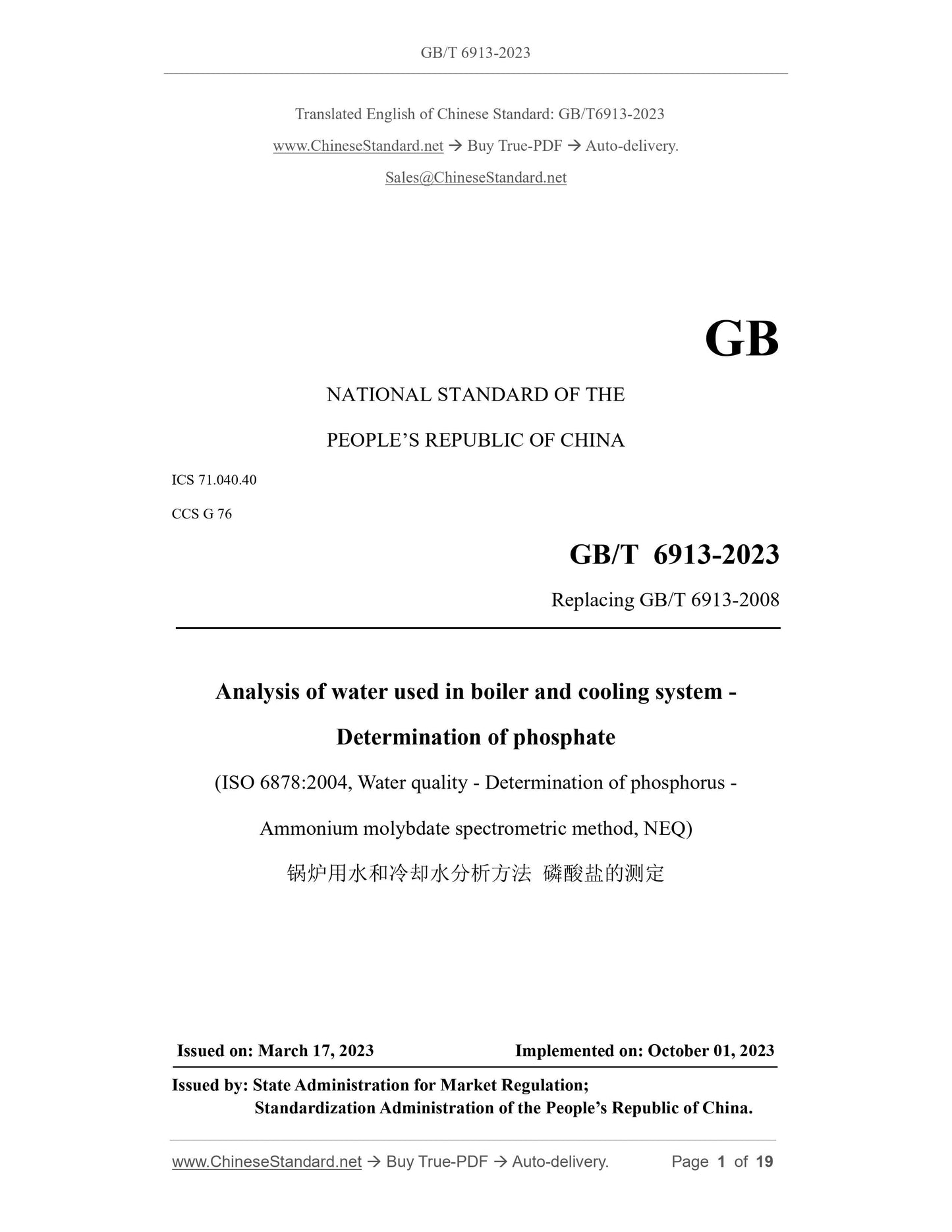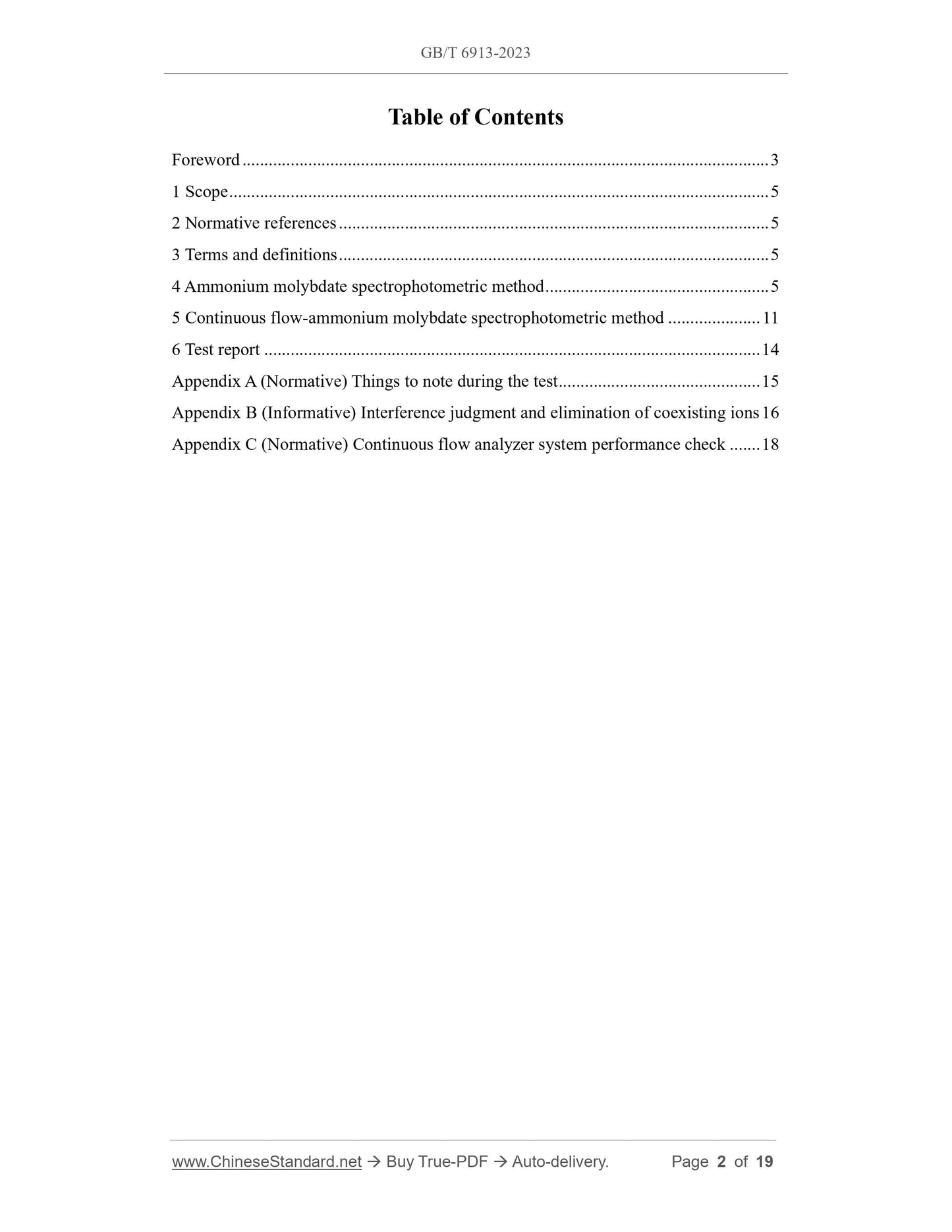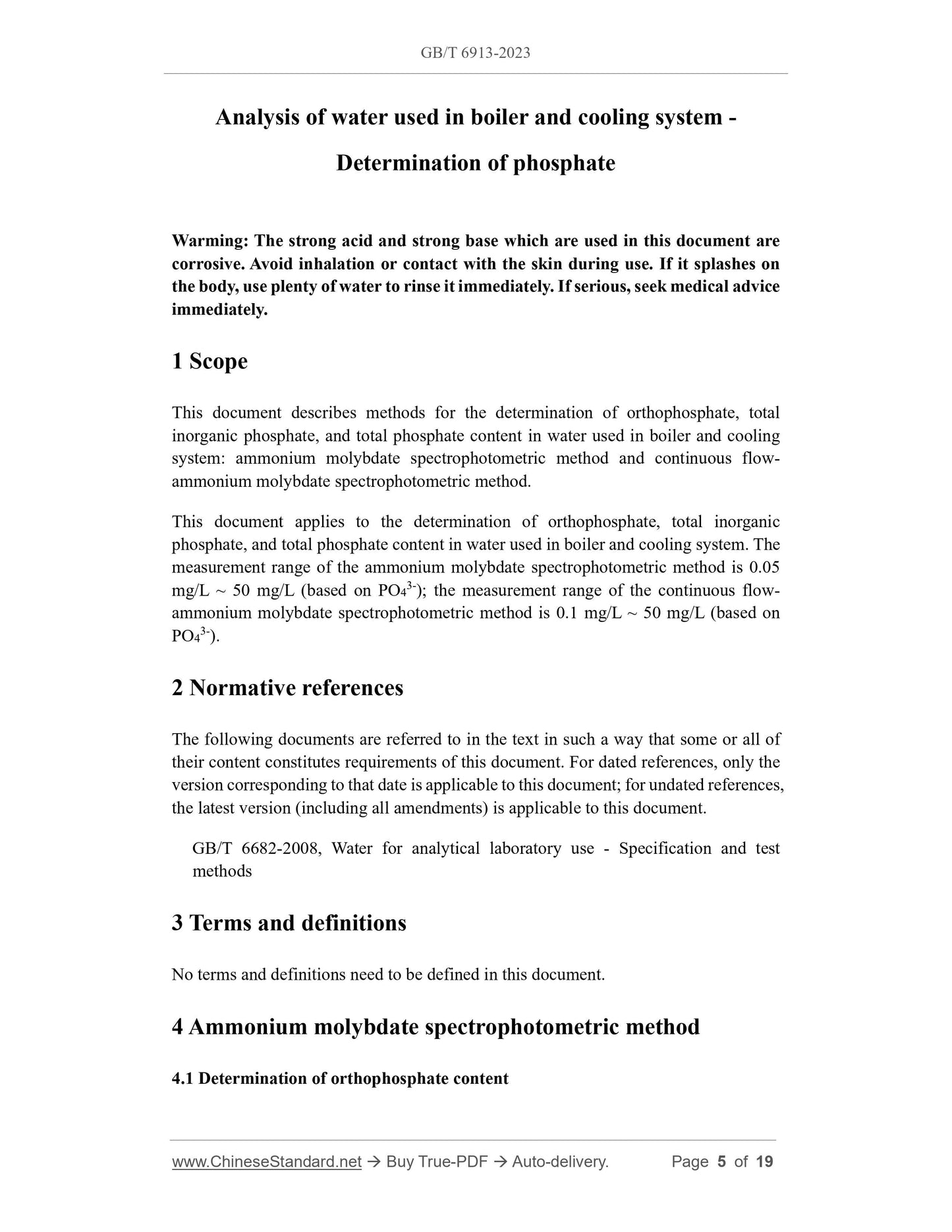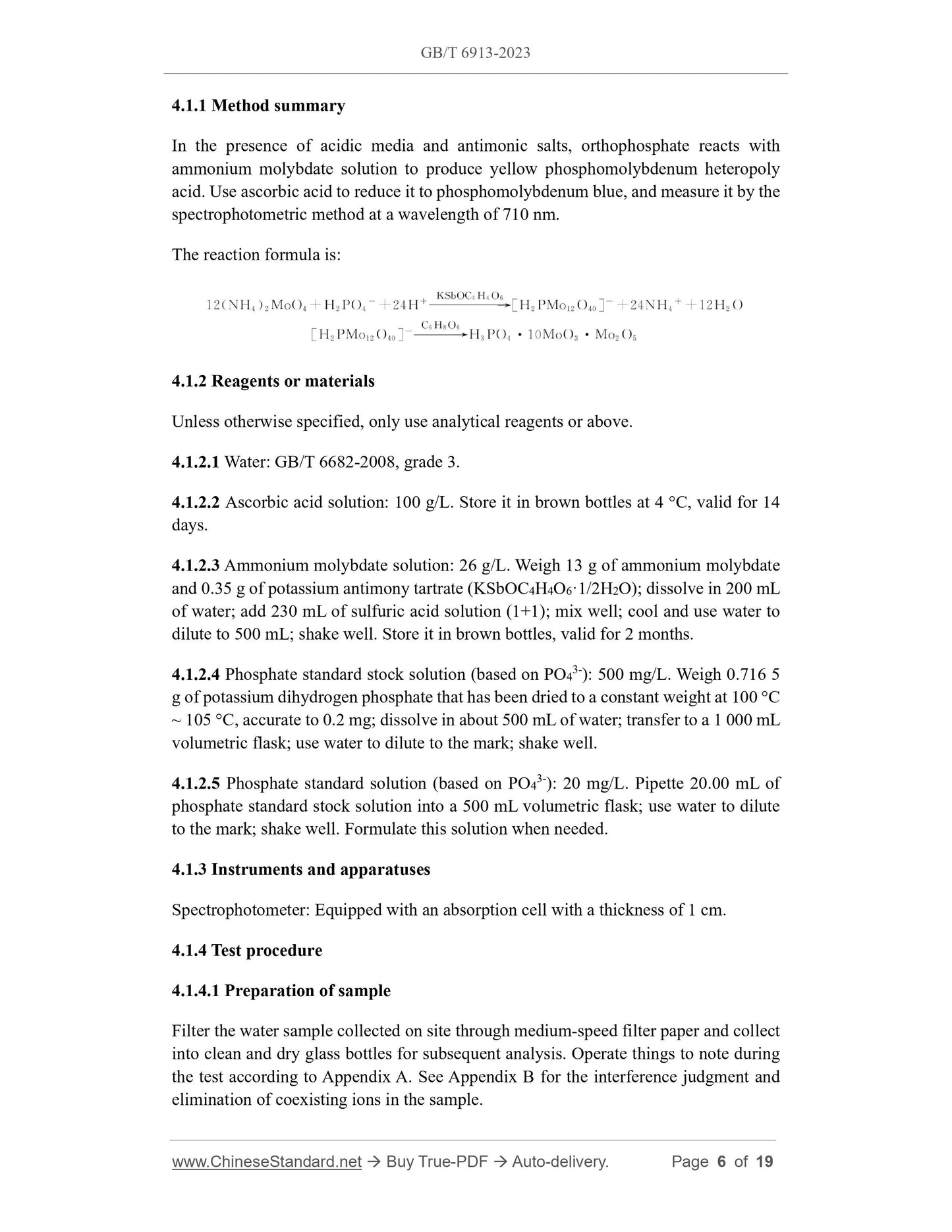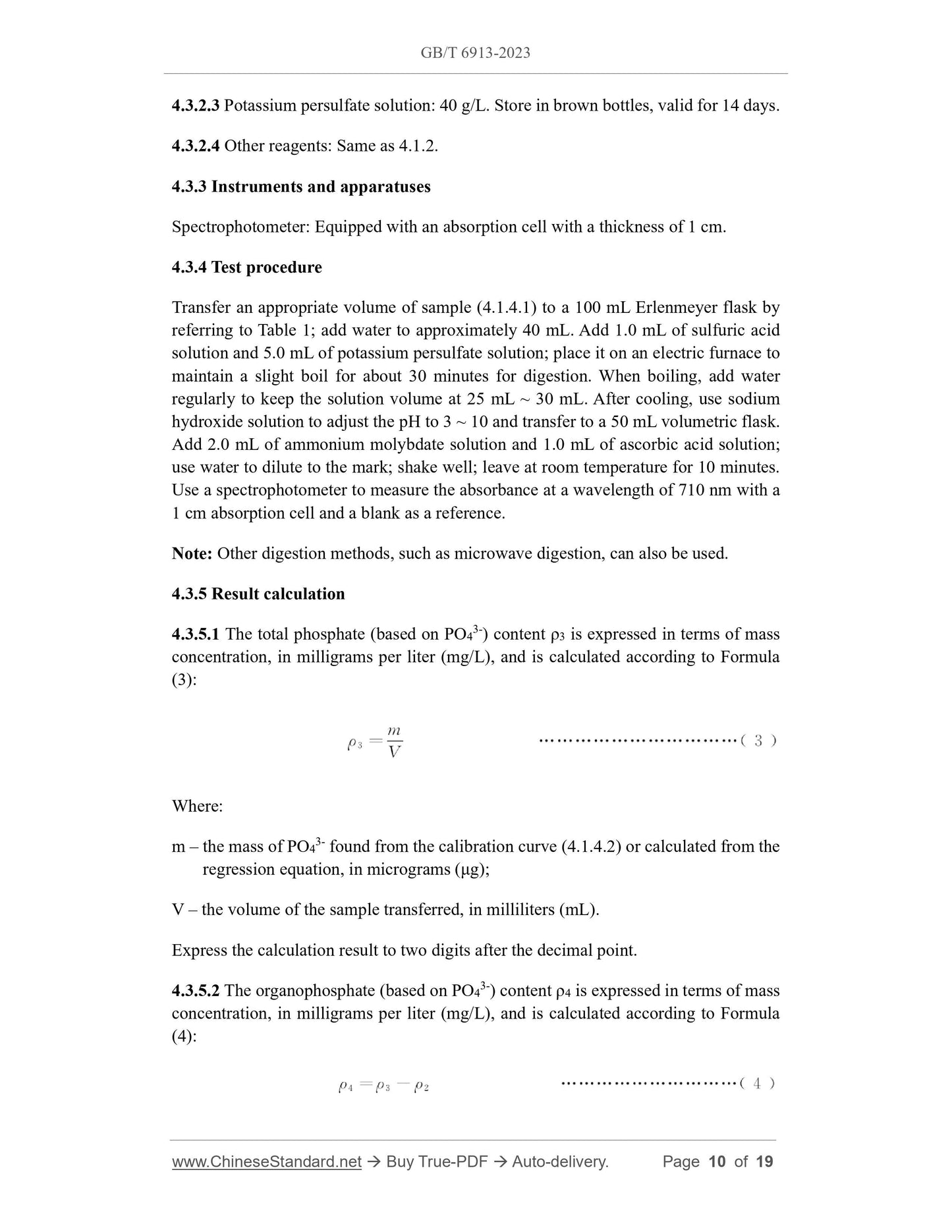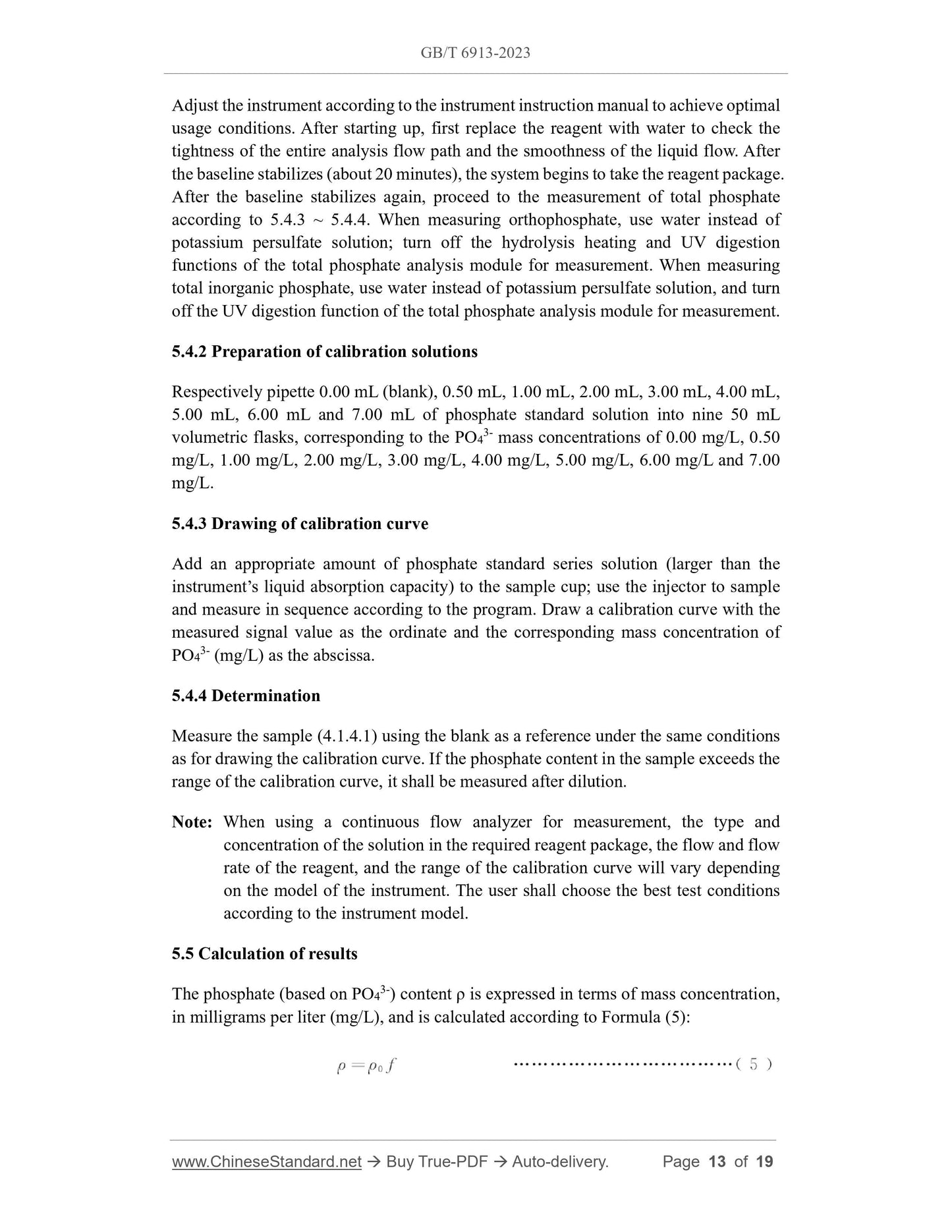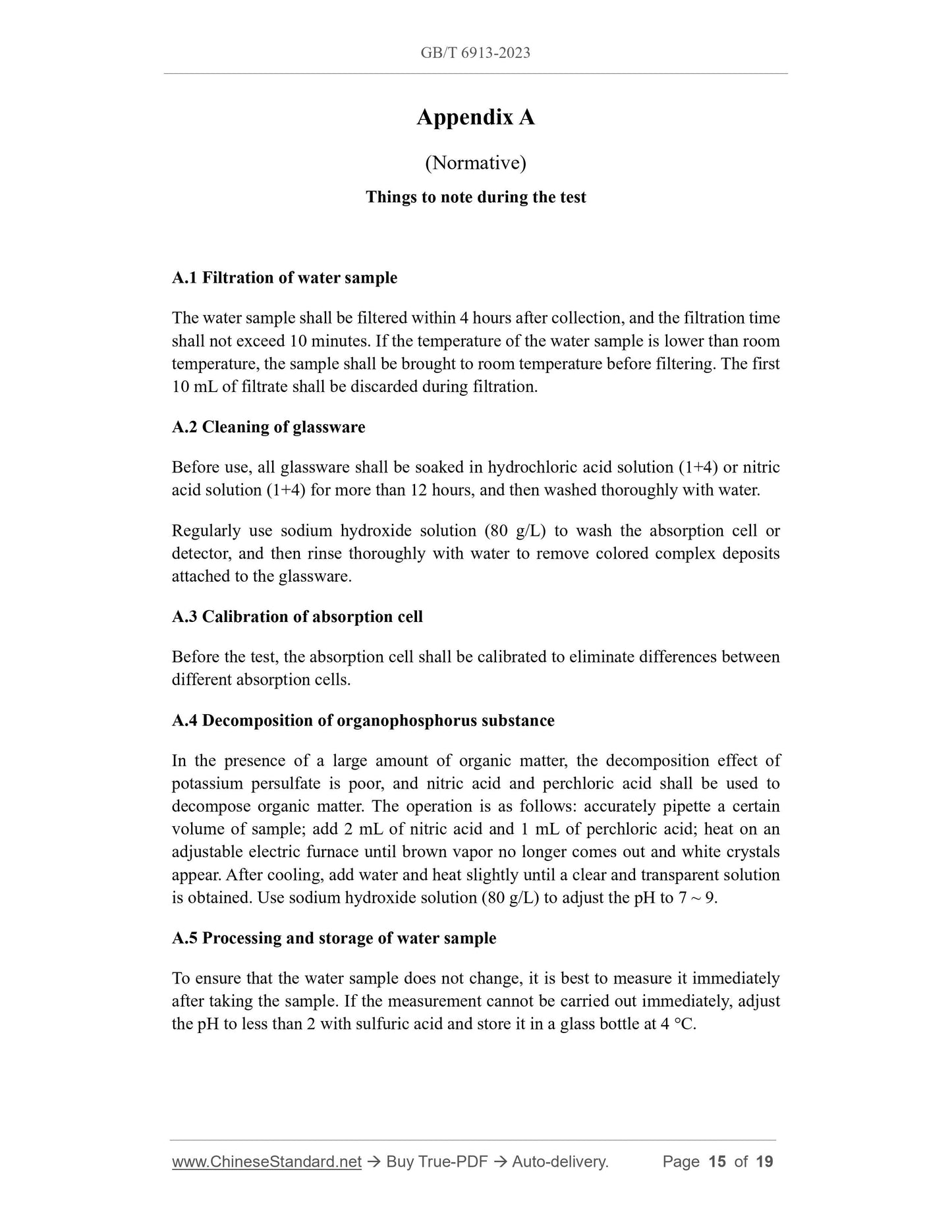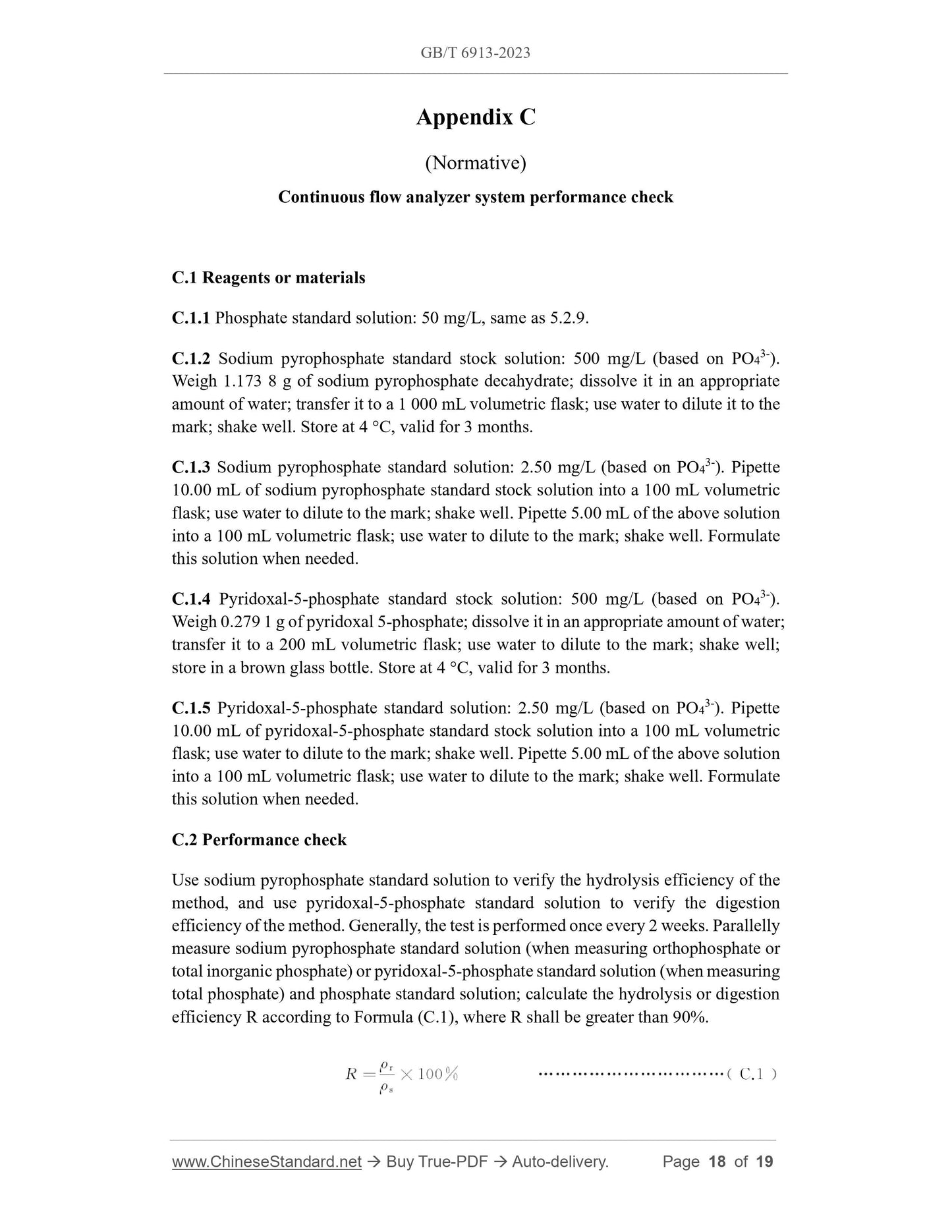1
/
of
8
www.ChineseStandard.us -- Field Test Asia Pte. Ltd.
GB/T 6913-2023 English PDF (GB/T6913-2023)
GB/T 6913-2023 English PDF (GB/T6913-2023)
Regular price
$185.00
Regular price
Sale price
$185.00
Unit price
/
per
Shipping calculated at checkout.
Couldn't load pickup availability
GB/T 6913-2023: Analysis of water used in boiler and cooling system - Determination of phosphate
Delivery: 9 seconds. Download (and Email) true-PDF + Invoice.Get Quotation: Click GB/T 6913-2023 (Self-service in 1-minute)
Newer / historical versions: GB/T 6913-2023
Preview True-PDF
Scope
This document describes methods for the determination of orthophosphate, totalinorganic phosphate, and total phosphate content in water used in boiler and cooling
system: ammonium molybdate spectrophotometric method and continuous flow-
ammonium molybdate spectrophotometric method.
This document applies to the determination of orthophosphate, total inorganic
phosphate, and total phosphate content in water used in boiler and cooling system. The
measurement range of the ammonium molybdate spectrophotometric method is 0.05
mg/L ~ 50 mg/L (based on PO43-); the measurement range of the continuous flow-
ammonium molybdate spectrophotometric method is 0.1 mg/L ~ 50 mg/L (based on
PO43-).
Basic Data
| Standard ID | GB/T 6913-2023 (GB/T6913-2023) |
| Description (Translated English) | Analysis of water used in boiler and cooling system - Determination of phosphate |
| Sector / Industry | National Standard (Recommended) |
| Classification of Chinese Standard | G76 |
| Classification of International Standard | 71.040.40 |
| Word Count Estimation | 14,167 |
| Date of Issue | 2023-03-17 |
| Date of Implementation | 2023-10-01 |
| Older Standard (superseded by this standard) | GB/T 6913-2008 |
| Issuing agency(ies) | State Administration for Market Regulation, China National Standardization Administration |
Share
